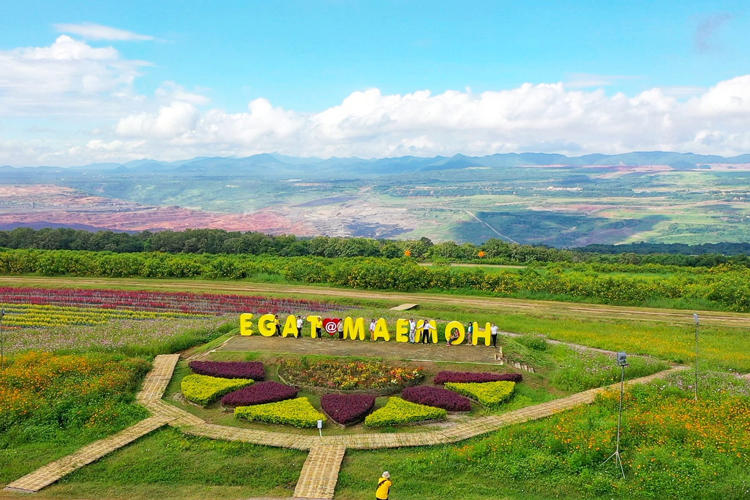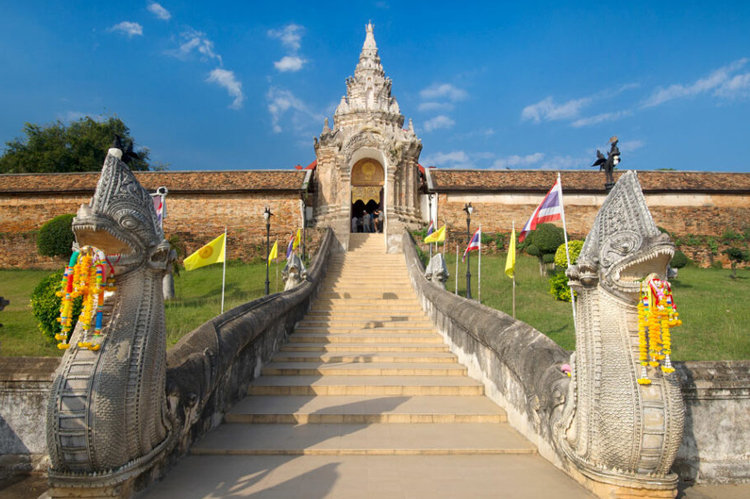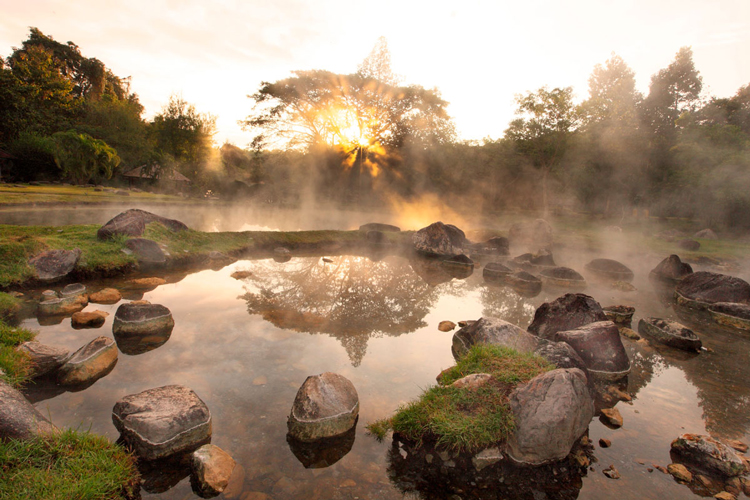Lampang

Northern Thailand's Lampang province is a mesmerizing travel destination that skillfully combines natural beauty, cultural richness, and a long history. With its name shared with the province, the capital of the province has a rich historical background, including venerable temples and old towns. The most notable of them is Wat Phra That Lampang Luang, which embodies the cultural significance of the area and features remarkable Lanna-style architecture. Known as the "City of the Horse Carriage," Lampang has retained its own appeal by keeping the old horse-drawn carriages that give tourists a nostalgic way to get about the city. The Thai Elephant Conservation Center is located in Lampang, underscoring the province's dedication to elephant health and conservation despite its historical and cultural significance.
The province showcases its rich cultural legacy via its festivals, which include traditional dance, music, and religious events. Lampang, surrounded by stunning scenery and mountains, also entices environment lovers with chances for hiking and discovery. In summary, Lampang, located in the center of Northern Thailand, entices visitors with a unique combination of natural beauty, cultural diversity, and historical grandeur.

View of Mae Moh Forest Park, Lampang from above
The fascinating history of Lampang, a province in northern Thailand, combines the impact of the Lanna Kingdom, ancient villages, and a dedication to cultural preservation. Lampang's origins date back more than a thousand years, and the Lanna Kingdom, which flourished from the 13th to the 18th century, left a lasting cultural, artistic, and architectural legacy. One of the historical sites is Wat Phra That Lampang Luang, which is said to have been built in the thirteenth century and is a moving example of the region's rich religious and cultural legacy. Lampang was able to preserve its independence and cultural identity during the colonial era.
The province has embraced modernity and tradition in equal measure, as seen by its dedication to maintaining traditional customs and artifacts like recognizable horse-drawn carriages. Lampang is a fascinating place that encourages research of its rich past and admiration for its vibrant present. Its history is a tapestry of tenacity, adaptability, and a harmonic combination of ancient roots with the shifting currents of time.

Wat Phra That Lampang Luang, a testament to the rich cultural and religious heritage of Lampang
Cool Season (November to February): It is said to be the most enjoyable time of year to visit Lampang. The cool season has cooler temperatures, from around 15 to 25 degrees Celsius. It's the perfect time of year for exploration and outdoor activities because the weather is pleasant and dry.
Hot Season (March to May): In Lampang, the summer months may be rather heated. The daily highs frequently surpass thirty degrees Celsius, and the temperatures sometimes surge. The weather is dry and bright during this time of year, so if you're going to be there, make sure you remain hydrated and take shade-related measures.
Rainy Season (June to October): In Lampang, the rainy season brings increased rainfall and humidity. Rainfall and thunderstorms frequently occur, resulting in a verdant and lush landscape. Although daytime temperatures are not as high as they are during the summer, it is still important to plan for the possibility of severe downpours on occasion. The average temperature during the rainy season is between 20 and 30 degrees Celsius.
According to Lampang's typical weather, the best season to visit this place is from November to February. With temperatures ranging from 15 to 25 degrees, this is a suitable time for tourism and leisure activities. outdoor entertainment
The amount of time you should spend in Lampang will depend on your interests, how quickly you want to go, and the things you want to do. That being said, a visit to Lampang should ideally last two to three days. This gives you ample time to see the city, important historical and cultural monuments, and some of the picturesque locations around.
Day 1: Explore Lampang City
Visit historical and cultural sites such as Wat Phra That Lampang Luang, Ban Sao Nak (House of Many Pillars), and other temples with distinctive Lanna architecture.
Take a leisurely stroll through the city center and experience the charm of Lampang's old town.
Enjoy a horse-drawn carriage ride, a unique mode of transportation that adds to the city's cultural atmosphere.
Day 2: Nature and Scenic Spots
Visit Chae Son National Park or other nearby natural attractions for a day of outdoor activities, such as hiking or enjoying hot springs.
Explore the picturesque landscapes surrounding Lampang, including the Wang River or other scenic spots like Mae Moh Forest Park.
Day 3: Cultural Experiences and Relaxation
Visit the Thai Elephant Conservation Center for a unique and educational experience with elephants.
Explore local markets and try Lampang's distinctive local cuisine.
Take some time to relax and unwind, perhaps at the Lampang River Lodge or other peaceful accommodations.

Chae Son Hot Springs, Lampang
Buses: Long-distance buses connect Lampang with neighboring provinces and other major cities in Thailand. You can check the bus stations in Lampang for routes and schedules. These buses are often an economical option for inter-provincial travel.
Trains: Lampang has a railway station, and trains provide a scenic and comfortable way to travel to nearby provinces. Check the train schedules and routes to plan your journey. Train travel is a popular choice for those who enjoy a leisurely and picturesque commute.
Private Cars or Taxis: Renting a car or hiring a taxi for a private transfer allows for flexibility and convenience, especially if you have a specific itinerary or are traveling with a group. Many car rental services operate in Lampang.
Songthaews or Minivans: Songthaews and minivans operate on certain routes, connecting Lampang with neighboring provinces. These are often used for shorter distances and can be an affordable option.
Domestic Flights: If you are traveling to a more distant neighboring province, you might consider taking a domestic flight. While Lampang itself doesn't have an airport with regular commercial flights, you can travel to the nearest airports in Chiang Mai or Phrae and then continue by land to your final destination
With our Lampang Tour 3 days: The Elephants Conservation Center, you can discove...
Explore rarely visited Doi Khuntan National Park on this North Thailand Trekking...
Join our Lampang tour 2 days for a scenic train ride from Chiang Mai, passing th...
Experience Lampang Tour 2 Days with visits to the Elephant Conservation Center,...